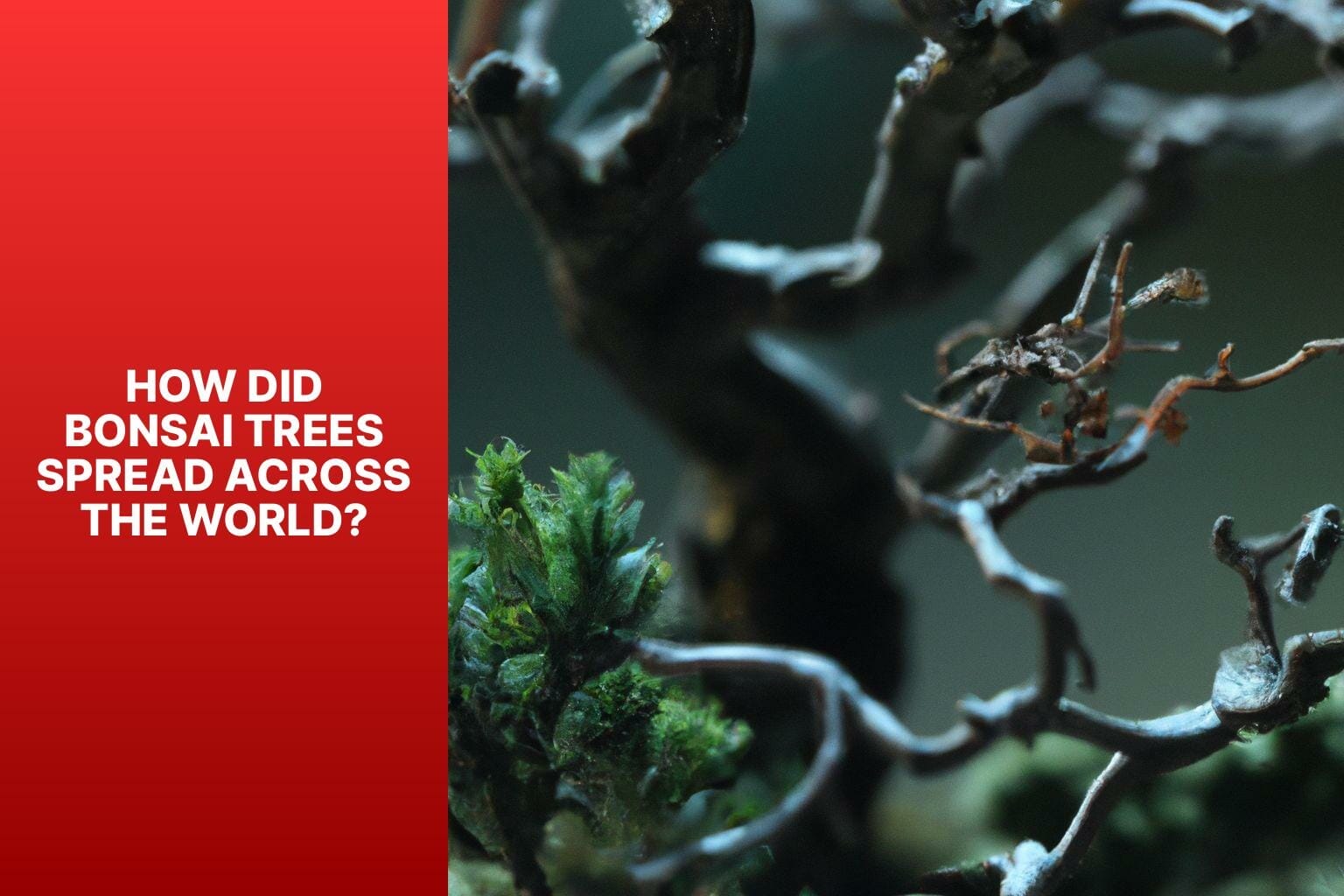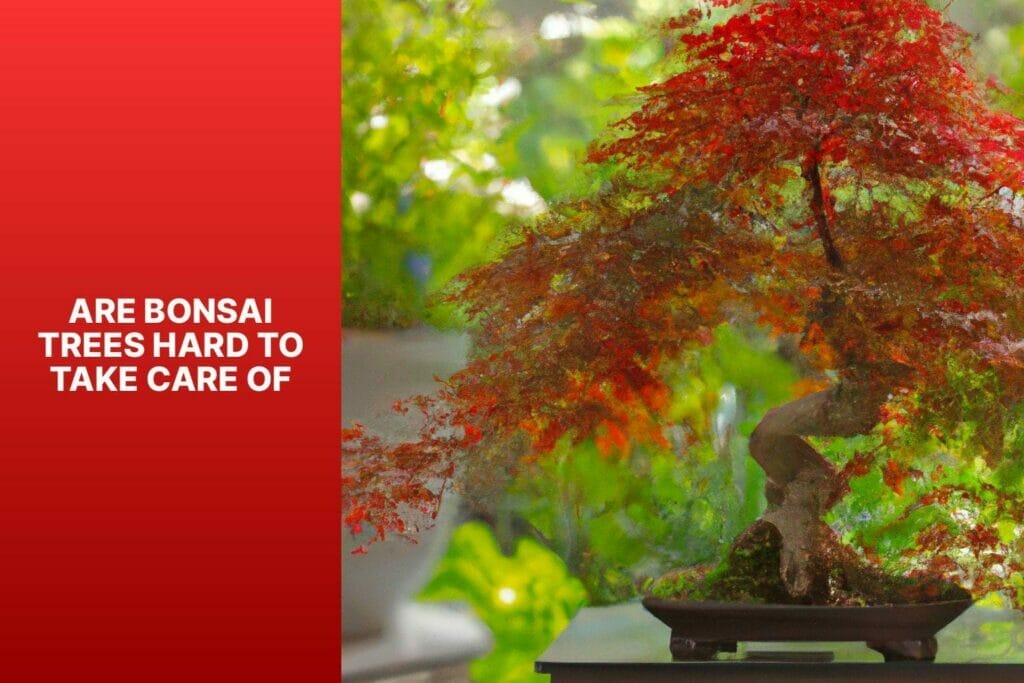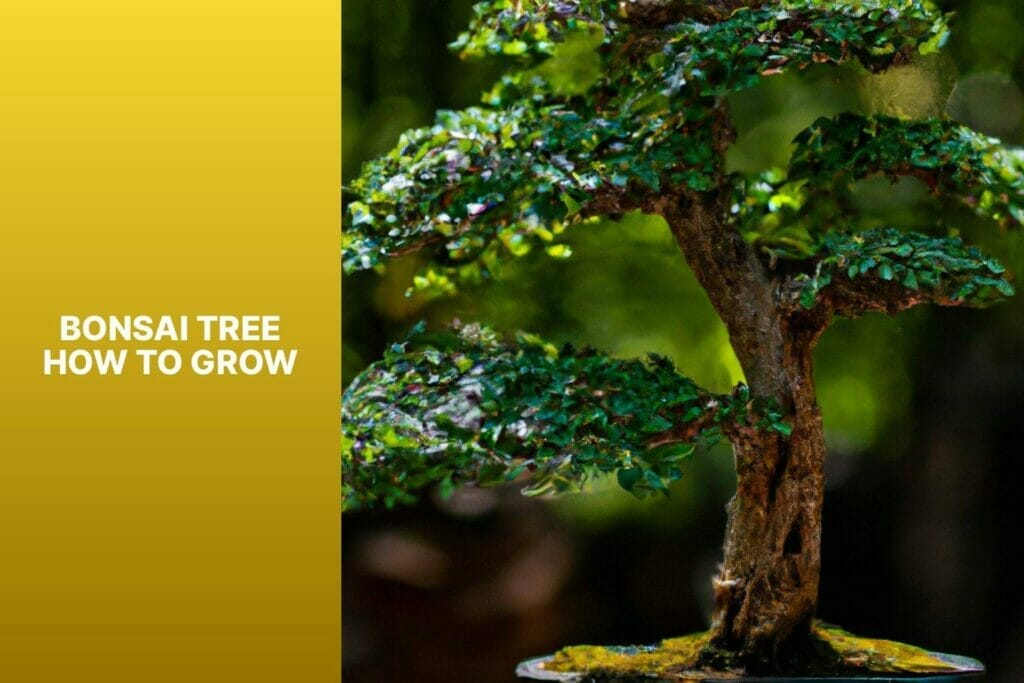The art of bonsai trees is a beloved horticultural practice that has captivated people worldwide. These miniature, carefully crafted trees have a rich history and cultural significance that dates back centuries.
Understanding the origin and spread of bonsai trees helps us appreciate their artistry and symbolism.
Bonsai trees originated in ancient China and were later developed and popularized in Japan. The historical background of bonsai trees provides insights into the cultural and artistic influences that shaped this unique horticultural practice.
In ancient China, the practice of growing miniaturized trees in containers began around 2,000 years ago. This art form, known as “banzai,” was initially linked to spiritual and philosophical beliefs.
It represented the harmonious coexistence between humans and nature. These miniature trees were prized possessions often displayed by scholars and aristocrats.
During the Tang Dynasty in China, penzai’s influence spread to Japan. It wasn’t until the Kamakura period in Japan (12th-14th century) that bonsai, as we know it today, started to take shape.
Japanese artists added flair and techniques to the art, creating a distinct style emphasizing simplicity, balance, and natural beauty.
Over time, bonsai trees gained widespread recognition and popularity. They traveled worldwide, influencing other Asian countries like Korea and Vietnam.
The introduction of bonsai to Europe and North America occurred through cultural exchanges and trade in the 18th and 19th centuries, capturing the fascination of horticulturists and collectors.
The cultivation of bonsai trees requires specialized techniques and dedication. Artists carefully manipulate the branches, roots, and foliage to create visually appealing aesthetics and portray natural landscapes in miniature form.
Bonsai techniques include pruning, wiring, and shaping to maintain the tree’s miniature size and create the desired artistic vision.
Beyond their artistic value, bonsai trees hold deep cultural significance and symbolism. They are considered living art forms and represent patience, resilience, and a deep appreciation for the beauty of nature.
Bonsai trees can express a range of emotions and convey a sense of tranquility, harmony, and the passage of time.
Exploring bonsai trees‘ origin, cultivation techniques, and symbolism provides a deeper understanding and appreciation for this ancient art form.
Whether displayed in homes, gardens, or exhibitions, these miniature trees continue to captivate and inspire people worldwide.
1. Bonsai trees originated in ancient China and were later developed and popularized in Japan.
2. Bonsai trees have spread worldwide, influencing Asia, Southeast Asia, Europe, and North America.
3. Bonsai tree cultivation requires specific techniques and skills.
4. Bonsai trees are considered a form of art and expression and hold cultural significance and symbolism.
What is the Origin of Bonsai Trees?
Bonsai trees: a miniature marvel with a rich history. Delve into the origins of these captivating creations and unlock their ancient secrets.
Discover the historical background behind bonsai trees, tracing their roots from the landscapes of ancient China to their development and popularity in Japan.
Uncover the fascinating journey that has shaped the art of bonsai, transporting us through time and culture. Prepare to be enthralled by the enchanting tale of the origin of bonsai trees.
The Historical Background of Bonsai Trees
Bonsai trees have a rich historical background that traces back to ancient China and Japan. The origins of bonsai trees can be found in ancient China during the Han Dynasty.
Chinese scholars cultivated bonsai trees to represent miniature landscapes and nature in a scaled-down form.
In the Tang Dynasty, the art of bonsai spread to Japan through cultural exchange. Japanese monks were captivated by the beauty of bonsai trees and saw them as a way to connect with nature and practice mindfulness.
Japan further developed bonsai cultivation and refinement techniques, leading to the blossoming of the art form.
Over time, bonsai trees gained popularity in Japan as a symbol of harmony, balance, and tranquility. They were displayed in exhibitions and cherished as objects of beauty.
The historical background of bonsai trees demonstrates their evolution from a Chinese horticultural practice to a cherished Japanese art form.
Understanding this history enhances our appreciation for the cultural significance and artistic expression that bonsai trees represent today.
Origins in Ancient China
The origins of bonsai trees can be traced back to ancient China. During this time, the Chinese practiced penjing, creating miniature landscapes and trees in containers. This art form evolved into bonsai.
Cultivating miniature trees in pots peaked during the Tang Dynasty in China, around the 7th century. Bonsai trees were highly valued and symbolized wealth and taste.
The Chinese used various techniques to shape and prune the trees, creating stunning designs.
During the Song Dynasty in China, the art of bonsai spread to Japan when Japanese monks studying in China brought it back.
Bonsai cultivation techniques were refined in Japan, and unique styles, like the formal upright and slanting styles, were introduced.
Bonsai trees became deeply ingrained in Japanese culture and were valued as objects of meditation and contemplation. They were often displayed in special alcoves and cherished for their aesthetic beauty.
True story: One of the world’s oldest known bonsai trees is the “Ficus retusa” bonsai, believed to be over 1,000 years old. It is currently housed at the Crespi Bonsai Museum in Italy, showcasing the enduring beauty of these ancient trees.
Development and Popularization in Japan
Bonsai trees experienced significant development and popularization in Japan during the Edo period. Several factors contributed to this phenomenon.
First and foremost, bonsai enthusiasts focused on refining cultivation and shaping techniques, effectively transforming bonsai into a true art form.
They played a pivotal role in the growth of bonsai aesthetics through experimentation with different styles.
The Japanese aristocracy and samurai class embraced and actively promoted bonsai. They proudly showcased their bonsai collections during cultural events and traditional tea ceremonies, showcasing their deep appreciation for this art form.
Zen Buddhism also played an influential role in the popularity of bonsai in Japan. Zen monks seamlessly integrated bonsai trees into their serene gardens, recognizing their potential for meditative and spiritual practices.
This infusion of tranquility and contemplation further heightened the appeal of bonsai.
In addition, the establishment of bonsai nurseries and clubs greatly contributed to popularizing bonsai in Japan. These entities provided a platform for bonsai enthusiasts to freely exchange knowledge, share experiences, and proudly display their intricate creations.
It is worth noting that the oldest known bonsai tree, Jomon Sugi, surpasses the remarkable age of 5,000 years. This ancient marvel is situated on Yakushima Island, a testament to Japan’s enduring legacy of bonsai.
How Did Bonsai Trees Spread Across the World?

Photo Credits: Mnbonsainetwork.Com by Ralph Martin
The fascinating journey of bonsai trees and their global spread is a tale of cultural influence and botanical marvels.
From their roots in Asia and Southeast Asia, where bonsai trees have deeply shaped artistic traditions and spiritual practices, to their introduction to Europe and North America, where they have captivated the hearts and green thumbs of enthusiasts, the story of bonsai trees is one of cultural exchange and horticultural admiration.
Join me as we uncover the influence of bonsai trees on different continents and explore their incredible journey across the world.
Influence on Asia and Southeast Asia
Bonsai trees have had a significant influence on Asia and Southeast Asia. Cultivating and appreciating bonsai trees originated in ancient China and later spread to Japan, where it was refined and elevated.
In Asia, bonsai trees symbolize patience, discipline, and harmony with nature.
Japan refined and elevated the bonsai cultivation techniques initially practiced in China. These techniques involved growing miniature trees in containers, known as penzai.
In Japan, bonsai became a form of artistic expression and was incorporated into cultural traditions such as tea ceremonies, Zen Buddhism practices, and imperial gardens.
As trade routes opened, bonsai trees gained popularity in other parts of Asia, including Korea and Vietnam. The art of bonsai cultivation spread throughout Southeast Asia and adapted to local artistic styles and cultural practices.
Today, bonsai trees are highly valued in Asia and Southeast Asia for their beauty and the sense of peace and tranquility they bring.
Bonsai exhibitions, workshops, and clubs exist in these regions, where enthusiasts continue cultivating and promoting this art form.
Introduction to Europe and North America
Europe and North America were introduced to bonsai in the 19th century when Japan opened its doors to trade.
This introduction to Europe and North America came about when Japanese immigrants settled in these regions, bringing with them bonsai trees and sharing their knowledge and passion for this ancient art form.
The delicate beauty and intricate craftsmanship of bonsai quickly captivated Europeans and Americans, who viewed it as an exquisite merging of horticulture and art.
In Europe, bonsai found a home among wealthy collectors and aristocrats who appreciated its delicate beauty and the skillful craftsmanship that went into its creation.
The popularity of bonsai grew even further with the emergence of bonsai exhibitions and societies, which helped to promote and spread awareness about this art form.
Meanwhile, bonsai gained traction in North America in the mid-20th century as clubs were established and exhibitions and workshops were organized.
Today, bonsai communities in Europe and North America thrive, with enthusiasts continually honing their skills and cultivating diverse collections.
Specialized bonsai nurseries and stores offer various tree species and accessories for cultivation. Dedicated bonsai artists and teachers pass on their knowledge and inspire new generations of enthusiasts, ensuring this ancient art form’s continued growth and appreciation.
A true testament to the introduction of bonsai to Europe and North America is exemplified by the journey of Taro Yamamoto, a Japanese immigrant who brought a small bonsai tree when he arrived in Paris in the late 1800s.
The Parisians were captivated by this miniature marvel and flocked to see it, igniting a fascination and admiration for bonsai that quickly spread throughout Europe.
Taro Yamamoto’s bonsai tree became a symbol of cultural exchange and appreciation, showcasing the profound beauty of nature transformed into art.
This story is a powerful reminder of how the introduction of bonsai to Europe and North America sparked a lifelong passion for this ancient art form.
Bonsai Tree Cultivation and Techniques
Bonsai Tree Cultivation and Techniques require patience and skill. The first step in Bonsai Tree Cultivation is selecting the right tree species.
Popular choices for Bonsai Tree Cultivation include pine, maple, and juniper.
Pruning is a technique that shapes the Bonsai Tree and creates the desired size. Wiring is another technique that guides branch growth and creates the desired aesthetic for Bonsai Tree Cultivation.
Watering and fertilizing are crucial techniques for Bonsai Tree Cultivation. Careful watering ensures moist soil but not saturation for Bonsai Tree Cultivation. Fertilizing provides essential nutrients needed for Bonsai Tree Cultivation.
Regular repotting is important in Bonsai Tree Cultivation for adequate root development for a healthy and compact root system. Proper sunlight exposure is necessary for Bonsai Tree Cultivation and well-being.
Adding moss, rocks, and other small decorative elements enhance the beauty of the Bonsai Tree. These Bonsai Tree Cultivation techniques require attention to detail.
With proper care and Bonsai Tree Cultivation techniques, bonsai trees can be a breathtaking addition to any space.
Appreciation and Symbolism of Bonsai Trees
Unveiling the enchanting world of bonsai trees, we dive into the Appreciation and Symbolism behind these miniature marvels.
Discover why bonsai trees hold a special place in art and expression while unraveling their deep-rooted Cultural Significance and Symbolism. As we explore this fascinating realm, we’ll unveil the captivating stories and rich heritage woven into the art of bonsai.
Get ready to be captivated by these miniature trees’ magic and allure.
Bonsai Trees as Art and Expression
Bonsai trees are both a horticultural practice and an art form. They allow for expression and creativity, reflecting the beauty of nature in a captivating small form.
As art and expression, Bonsai trees allow individuals to display their love for nature and their ability to manipulate it into living art.
Creating a bonsai tree involves careful pruning, wiring, and shaping to achieve the desired aesthetic effect. Artists use their skills and knowledge to bring out each tree’s unique characteristics and natural beauty, creating a captivating visual masterpiece.
Bonsai trees as art and expression have gained popularity worldwide, with enthusiasts appreciating the intricate details and symbolism conveyed through these living sculptures. Each tree tells a story and conveys a sense of harmony and balance.
Beyond aesthetics, the art of bonsai also serves as a medium for self-expression and personal growth. Many individuals find solace and peace in the meticulous care and maintenance of bonsai trees. It teaches patience, discipline, and the importance of nurturing living things.
To conclude, bonsai trees embody the beauty of nature, human creativity, and the harmony between man and the natural world. They allow individuals to explore their artistic abilities and cultivate a deeper connection with nature.
Cultural Significance and Symbolism
Bonsai trees hold great cultural significance and symbolism in societies worldwide. In Japan, they embody traditional values of patience, harmony, and simplicity, making them a living art that enchants observers with beauty.
Bonsai trees also symbolize the deep connection between humans and nature, reminding us of our place in the natural world.
In Chinese culture, bonsai trees are closely associated with Daoism, emphasizing balance and harmony. The cultivation techniques employed in bonsai showcase the meticulous attention to detail highly valued in Chinese culture.
Bonsai trees have gained significant popularity in Europe and North America due to their aesthetic appeal and contemplative nature. These regions view bonsai trees as tranquility, unity, and strength symbols.
While bonsai trees’ cultural significance and symbolism may vary across different societies, they are universally cherished for evoking feelings of peace, connection, and reverence for the natural world.
Whether proudly displayed in homes, gardens, or exhibition halls, bonsai trees continue to captivate people with their incredible beauty and profound meaning.
Bonsai trees originated in ancient China over a thousand years ago and were later refined as a respected art form by the Japanese.
Since then, bonsai trees have spread worldwide, bringing joy to all those who appreciate their exquisite craftsmanship and rich symbolic value.
Some Facts About Where Bonsai Trees Originate:
- ✅ Bonsai trees originated in ancient China before the 8th century AD. (Source: Our Team)
- ✅ The Chinese practice of penjing inspired the art of bonsai. (Source: Our Team)
- ✅ Bonsai trees have been cultivated in Japan since the 6th century AD. (Source: Our Team)
- ✅ The term “bonsai” is a Japanese pronunciation of the earlier Chinese term “penzai.” (Source: Our Team)
- ✅ Bonsai trees are often grown in shallow containers filled with sand. (Source: Our Team)


